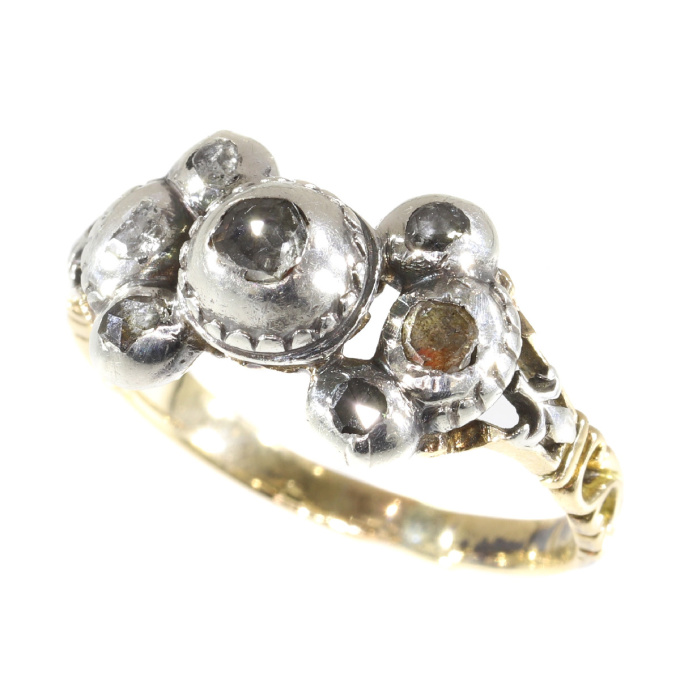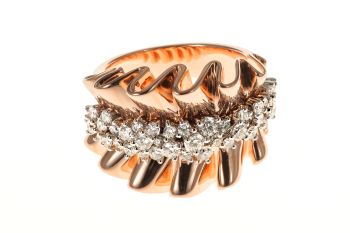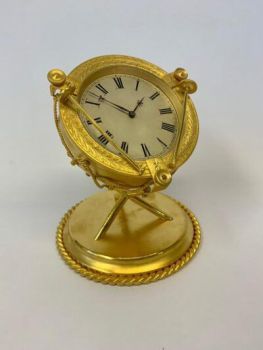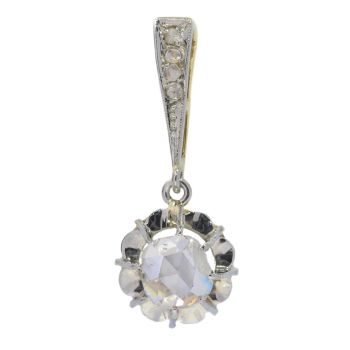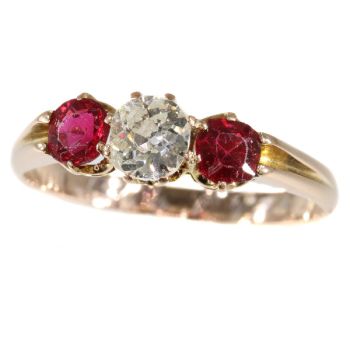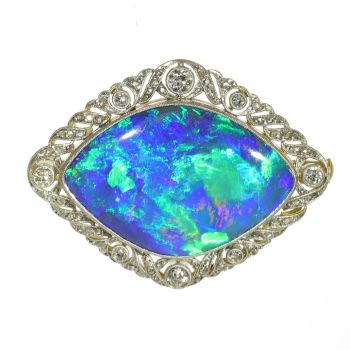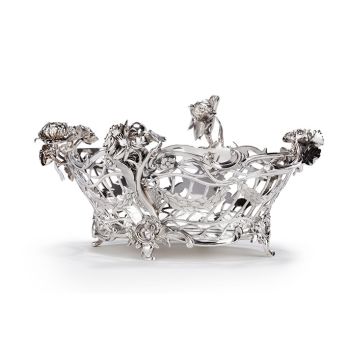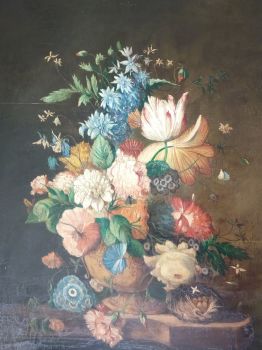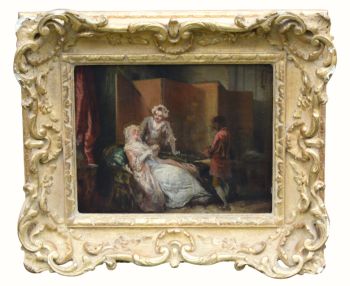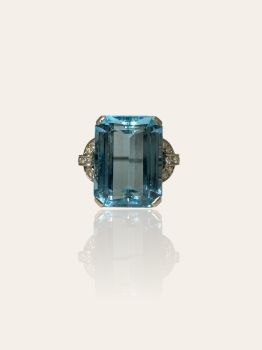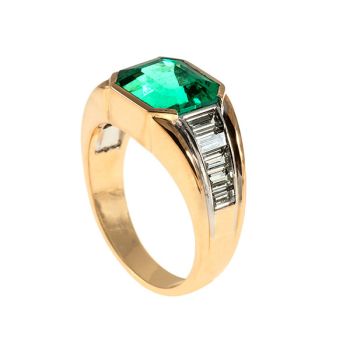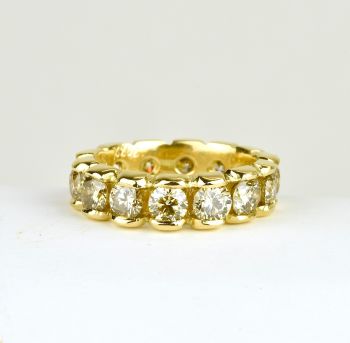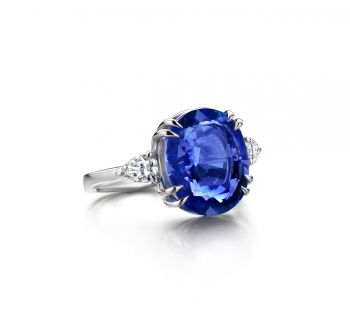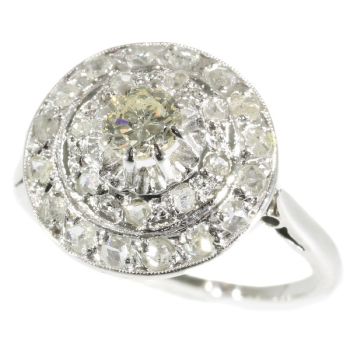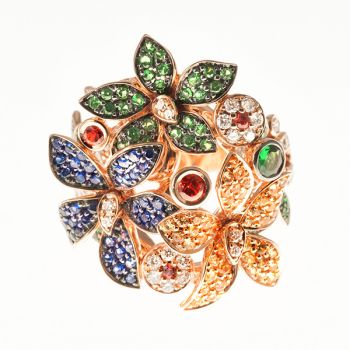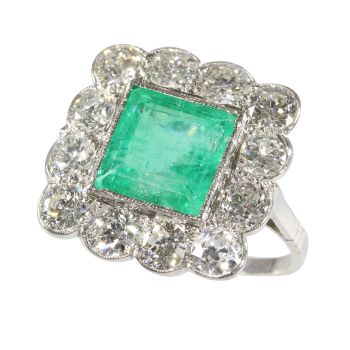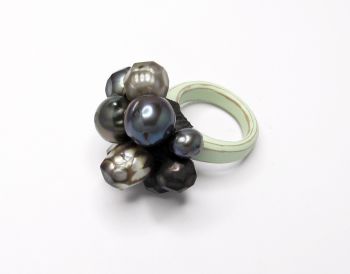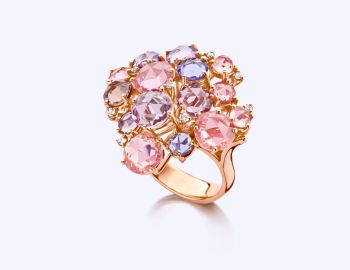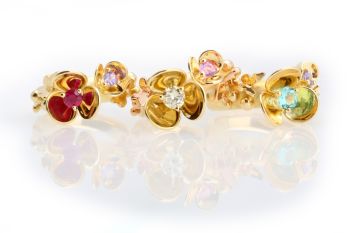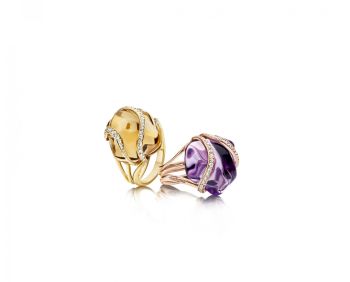Anel de diamante antigo barroco / rococó 1700
Artista Desconhecido
DiamanteOuroPrataGemstone
Atualmente indisponível via Gallerease
- Sobre arte
Antique jewelry object group: ring
Condition: good condition
- (more info on our condition scale)
Country of origin: unknown
Style: Something between Baroque and Rococo
Baroque - Baroque is an artistic style prevalent from the late 16th century to the early 18th century in Europe. It is most often defined as "the dominant style of art in Europe between the Mannerist and Rococo eras, a style characterized by dynamicmovement, overt emotion and self-confident rhetoric".
- See also: Baroque
Rococo - Rococo (less commonly roccoco) also referred to as "Late Baroque" is an 18th century style which developed as Baroque artists gave up their symmetry and became increasingly more ornate, florid, and playful. Rococo rooms were designed as totalworks of art with elegant and ornate furniture, small sculptures, ornamental mirrors, and tapestry complementing architecture, reliefs, and wall paintings. It was largely supplanted by the Neoclassic style. In 1835 the Dictionary of the French Academystated that the word Rococo "usually covers the kind of ornament, style and design associated with Louis XV's reign and the beginning of that of Louis XVI". It includes therefore, all types of art produced around the middle of the 18th century inFrance.
- See also: Rococoor more info on styles
Style specifics: Baroque is a style in art and decoration that developed shortly before 1600 and remained current in Europe until the emergence of the Rococo style c.1730. It was started in Italy, and spread to Germany, Austria, the Low Countries, and Spain andPortugal, with only a somewhat severely classical version being popular in France under Louis XIV. The style was a development of the Renaissance style and is characterized by lively, curved, and exuberant forms, by vigorous movement, and by richornament, based on classical sources, being symmetrical as distinguished from the asymmetry of the following Rococo style.
Period: ca. 1700
- (events & facts of this era, poetry of this era, fashion of this era)
Material: 18k yellow gold and silver, see also: The silver on gold technique
- (more info on precious metals)
Technique: The rose cuts are set on foil. This is a special technique that was used to bring the lustre of the diamonds to its best quality.
Diamond(s): Seven rose cut diamonds. We do not have the weight of the diamonds which is normal in our trade when it comes to rose cuts.
Birthstones: Diamond is the birthstone (or month stone) for April.
- (more info on birthstones)
Hallmarks: No trace.
- (more info on hallmarks)
Dimensions: width of top of ring 1,25 cm (0,49 inch)
Weight: 4,30 gram (2,76 dwt)
Ring size Continental: 55 & 17½ , Size US 7¼ , Size UK: O
Resizing: Free resizing (only for extreme resizing we have to charge).
- (more info on ring sizes)
Reference Nº: 19086-0035
Copyright photography: Adin, fine antique jewelry
- Sobre artista
Pode acontecer que um artista ou criador seja desconhecido.
Algumas obras não devem ser determinadas por quem são feitas ou são feitas por (um grupo de) artesãos. Exemplos são estátuas dos tempos antigos, móveis, espelhos ou assinaturas que não são claras ou legíveis, mas também algumas obras não são assinadas.
Além disso, você pode encontrar a seguinte descrição:
•"Atribuído a …." Na opinião deles, provavelmente uma obra do artista, pelo menos em parte
• “Estúdio de…” ou “Oficina de” Em sua opinião um trabalho executado no estúdio ou oficina do artista, possivelmente sob sua supervisão
• "Círculo de ..." Na opinião deles, uma obra da época do artista mostrando sua influência, intimamente associada ao artista, mas não necessariamente seu aluno
•“Estilo de…” ou “Seguidor de…” Na opinião deles, um trabalho executado no estilo do artista, mas não necessariamente por um aluno; pode ser contemporâneo ou quase contemporâneo
• "Maneira de ..." Na opinião deles, uma obra no estilo do artista, mas de data posterior
•"Depois …." Na opinião deles uma cópia (de qualquer data) de uma obra do artista
• “Assinado…”, “Datado…” ou “Inscrito” Na opinião deles, a obra foi assinada/datada/inscrita pelo artista. A adição de um ponto de interrogação indica um elemento de dúvida
• "Com assinatura ….”, “Com data ….”, “Com inscrição ….” ou “Tem assinatura/data/inscrição” na opinião deles a assinatura/data/inscrição foi adicionada por outra pessoa que não o artista
Related artworks
Artista Desconhecido
Engels struttclock gesigneerd H.Rodrigues 42 Piccadilly 19th century
Preço em pedidoNico van den Assem restauratie
1 - 4 / 12 Com curadoria de
Com curadoria deDanny Bree
 Com curadoria de
Com curadoria deDanny Bree
Artista Desconhecido
A pair of angels Antwerp, 17th century, Carrara marble17th century
Preço em pedidoFrederik Muller
Johannes van Dreght
Antique Dutch still life flowers in vase1740 - 1800
Preço em pedidoGallerease Selected
1 - 4 / 24- 1 - 4 / 24
- 1 - 4 / 24

